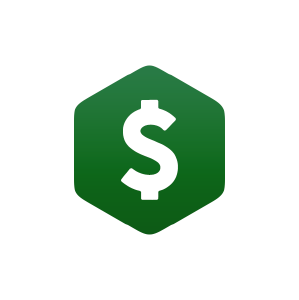7.10: Cash Budget
- Page ID
- 44250
\( \newcommand{\vecs}[1]{\overset { \scriptstyle \rightharpoonup} {\mathbf{#1}} } \)
\( \newcommand{\vecd}[1]{\overset{-\!-\!\rightharpoonup}{\vphantom{a}\smash {#1}}} \)
\( \newcommand{\dsum}{\displaystyle\sum\limits} \)
\( \newcommand{\dint}{\displaystyle\int\limits} \)
\( \newcommand{\dlim}{\displaystyle\lim\limits} \)
\( \newcommand{\id}{\mathrm{id}}\) \( \newcommand{\Span}{\mathrm{span}}\)
( \newcommand{\kernel}{\mathrm{null}\,}\) \( \newcommand{\range}{\mathrm{range}\,}\)
\( \newcommand{\RealPart}{\mathrm{Re}}\) \( \newcommand{\ImaginaryPart}{\mathrm{Im}}\)
\( \newcommand{\Argument}{\mathrm{Arg}}\) \( \newcommand{\norm}[1]{\| #1 \|}\)
\( \newcommand{\inner}[2]{\langle #1, #2 \rangle}\)
\( \newcommand{\Span}{\mathrm{span}}\)
\( \newcommand{\id}{\mathrm{id}}\)
\( \newcommand{\Span}{\mathrm{span}}\)
\( \newcommand{\kernel}{\mathrm{null}\,}\)
\( \newcommand{\range}{\mathrm{range}\,}\)
\( \newcommand{\RealPart}{\mathrm{Re}}\)
\( \newcommand{\ImaginaryPart}{\mathrm{Im}}\)
\( \newcommand{\Argument}{\mathrm{Arg}}\)
\( \newcommand{\norm}[1]{\| #1 \|}\)
\( \newcommand{\inner}[2]{\langle #1, #2 \rangle}\)
\( \newcommand{\Span}{\mathrm{span}}\) \( \newcommand{\AA}{\unicode[.8,0]{x212B}}\)
\( \newcommand{\vectorA}[1]{\vec{#1}} % arrow\)
\( \newcommand{\vectorAt}[1]{\vec{\text{#1}}} % arrow\)
\( \newcommand{\vectorB}[1]{\overset { \scriptstyle \rightharpoonup} {\mathbf{#1}} } \)
\( \newcommand{\vectorC}[1]{\textbf{#1}} \)
\( \newcommand{\vectorD}[1]{\overrightarrow{#1}} \)
\( \newcommand{\vectorDt}[1]{\overrightarrow{\text{#1}}} \)
\( \newcommand{\vectE}[1]{\overset{-\!-\!\rightharpoonup}{\vphantom{a}\smash{\mathbf {#1}}}} \)
\( \newcommand{\vecs}[1]{\overset { \scriptstyle \rightharpoonup} {\mathbf{#1}} } \)
\( \newcommand{\vecd}[1]{\overset{-\!-\!\rightharpoonup}{\vphantom{a}\smash {#1}}} \)
\(\newcommand{\avec}{\mathbf a}\) \(\newcommand{\bvec}{\mathbf b}\) \(\newcommand{\cvec}{\mathbf c}\) \(\newcommand{\dvec}{\mathbf d}\) \(\newcommand{\dtil}{\widetilde{\mathbf d}}\) \(\newcommand{\evec}{\mathbf e}\) \(\newcommand{\fvec}{\mathbf f}\) \(\newcommand{\nvec}{\mathbf n}\) \(\newcommand{\pvec}{\mathbf p}\) \(\newcommand{\qvec}{\mathbf q}\) \(\newcommand{\svec}{\mathbf s}\) \(\newcommand{\tvec}{\mathbf t}\) \(\newcommand{\uvec}{\mathbf u}\) \(\newcommand{\vvec}{\mathbf v}\) \(\newcommand{\wvec}{\mathbf w}\) \(\newcommand{\xvec}{\mathbf x}\) \(\newcommand{\yvec}{\mathbf y}\) \(\newcommand{\zvec}{\mathbf z}\) \(\newcommand{\rvec}{\mathbf r}\) \(\newcommand{\mvec}{\mathbf m}\) \(\newcommand{\zerovec}{\mathbf 0}\) \(\newcommand{\onevec}{\mathbf 1}\) \(\newcommand{\real}{\mathbb R}\) \(\newcommand{\twovec}[2]{\left[\begin{array}{r}#1 \\ #2 \end{array}\right]}\) \(\newcommand{\ctwovec}[2]{\left[\begin{array}{c}#1 \\ #2 \end{array}\right]}\) \(\newcommand{\threevec}[3]{\left[\begin{array}{r}#1 \\ #2 \\ #3 \end{array}\right]}\) \(\newcommand{\cthreevec}[3]{\left[\begin{array}{c}#1 \\ #2 \\ #3 \end{array}\right]}\) \(\newcommand{\fourvec}[4]{\left[\begin{array}{r}#1 \\ #2 \\ #3 \\ #4 \end{array}\right]}\) \(\newcommand{\cfourvec}[4]{\left[\begin{array}{c}#1 \\ #2 \\ #3 \\ #4 \end{array}\right]}\) \(\newcommand{\fivevec}[5]{\left[\begin{array}{r}#1 \\ #2 \\ #3 \\ #4 \\ #5 \\ \end{array}\right]}\) \(\newcommand{\cfivevec}[5]{\left[\begin{array}{c}#1 \\ #2 \\ #3 \\ #4 \\ #5 \\ \end{array}\right]}\) \(\newcommand{\mattwo}[4]{\left[\begin{array}{rr}#1 \amp #2 \\ #3 \amp #4 \\ \end{array}\right]}\) \(\newcommand{\laspan}[1]{\text{Span}\{#1\}}\) \(\newcommand{\bcal}{\cal B}\) \(\newcommand{\ccal}{\cal C}\) \(\newcommand{\scal}{\cal S}\) \(\newcommand{\wcal}{\cal W}\) \(\newcommand{\ecal}{\cal E}\) \(\newcommand{\coords}[2]{\left\{#1\right\}_{#2}}\) \(\newcommand{\gray}[1]{\color{gray}{#1}}\) \(\newcommand{\lgray}[1]{\color{lightgray}{#1}}\) \(\newcommand{\rank}{\operatorname{rank}}\) \(\newcommand{\row}{\text{Row}}\) \(\newcommand{\col}{\text{Col}}\) \(\renewcommand{\row}{\text{Row}}\) \(\newcommand{\nul}{\text{Nul}}\) \(\newcommand{\var}{\text{Var}}\) \(\newcommand{\corr}{\text{corr}}\) \(\newcommand{\len}[1]{\left|#1\right|}\) \(\newcommand{\bbar}{\overline{\bvec}}\) \(\newcommand{\bhat}{\widehat{\bvec}}\) \(\newcommand{\bperp}{\bvec^\perp}\) \(\newcommand{\xhat}{\widehat{\xvec}}\) \(\newcommand{\vhat}{\widehat{\vvec}}\) \(\newcommand{\uhat}{\widehat{\uvec}}\) \(\newcommand{\what}{\widehat{\wvec}}\) \(\newcommand{\Sighat}{\widehat{\Sigma}}\) \(\newcommand{\lt}{<}\) \(\newcommand{\gt}{>}\) \(\newcommand{\amp}{&}\) \(\definecolor{fillinmathshade}{gray}{0.9}\)The availability and commitment of cash is critical to management planning and operational success. The cash budget provides relevant information by estimating cash receipts and cash payments for one or more periods.
Cash receipts result from cash sales, collection of accounts receivable, other revenue sources, sales of assets, and issuance of stocks and bonds. Cash payments occur due to incurring costs and expenses, paying invoices on account, purchasing assets, paying off debts, and paying interest and dividends. The frequency and amount of these transactions are estimated and consolidated to form the cash budget.
The most common reason for cash receipts is sales to customers, and the most frequent cash payments are due to sales-related costs. The following example will illustrate the preparation of the cash budget.
Assume that Jonick Corporation begin operating on January 1, 2019. Projected sales to customers for the first four months are as follows.
|
January |
February |
March |
April |
|
|
Budgeted sales |
$68,000 |
$90,000 |
$124,000 |
$139,000 |
|
\(\ \quad \quad\)Budgeted cash sales (20%) |
13,600 |
18,000 |
24,800 |
27,800 |
|
\(\ \quad \quad\)Budgeted sales on account (80%) |
54,400 |
72,000 |
99,200 |
111,200 |
The company expects that 20% of each month’s sales will be for cash and the remainder on account. It anticipates that 40% of sales on account will be collected in the month of sale, 50% will be collected in the following month, and the remaining 10% collected during the second month after the sale.
The following table illustrates the budgeted cash collections from sales for each of the four months with corresponding calculations.
|
January |
February |
March |
April |
|||||
|
Cash collections from sales: |
||||||||
|
Cash collected from cash sales |
$13,600 |
($68,000 x 20%) |
$18,000 |
($90,000 x 20%) |
$24,800 |
($124,000 x 20%) |
$27,800 |
($139,000 x 20%) |
|
Cash collected from this month’s sales on account (40%) |
21,760 |
($54,400 x 40%) |
28,800 |
($72,000 x 40%) |
39,680 |
($99,200 x 40%) |
44,480 |
($111,200 x 40%) |
|
Cash collected from last month’s sales on account (50%) |
0 |
- |
27,200 |
($54,400 x 50%) |
36,000 |
($72,000 x 50%) |
49,600 |
($99,200 x 50%) |
|
Cash collected sales on account two months ago (10%) |
0 |
- |
0 |
- |
5,440 |
($54,400 x 10%) |
7,200 |
($72,000 x 10%) |
|
Total cash collections from sales |
$35,360 |
$74,000 |
$105,920 |
$129,080 |
Each month, the company expects to collect for cash sales plus for sales on account for the current month and for the previous two months. In this example, cash collections are expected to be $35,360 for January, $74,000 for February, $105,920 for March, and $129,080 for April.
Projected purchases from vendors for the first four months are as follows.
|
January |
February |
March |
April |
|
|
Budgeted purchases |
$34,000 |
$45,000 |
$62,000 |
$70,000 |
|
\(\ \quad \quad\)Budgeted cash purchases (30%) |
10,200 |
13,500 |
18,600 |
21,000 |
|
\(\ \quad \quad\)Budgeted purchases on account (70%) |
23,800 |
31,500 |
43,400 |
49,000 |
The company expects that 30% of each month’s purchases will be for cash and the remainder on account. It anticipates that 60% of purchases on account will be paid in the month of sale, 30% will be paid in the following month, and the remaining 10% paid during the second month after the sale.
The following table illustrates the budgeted cash payments to vendors for each of the four months with corresponding calculations.
|
January |
February |
March |
April |
|||||
|
Cash payments from purchases: |
||||||||
|
Cash paid for purchases |
$10,200 |
($34,000 x 30%) |
$13,500 |
($45,000 x 30%) |
$18,600 |
($62,000 x 30%) |
$21,000 |
($70,000 x 30%) |
|
Cash paid for this month’s purchases on account (60%) |
14,280 |
($23,800 x 60%) |
18,900 |
($31,500 x 60%) |
26,040 |
($43,400 x 60%) |
29,400 |
($49,000 x 60%) |
|
Cash paid for last month’s sales on account (30%) |
0 |
- |
7,140 |
($23,800 x 30%) |
9,450 |
($31,500 x 30%) |
13,020 |
($43,400 x 30%) |
|
Cash paid for purchases on account two months ago (10%) |
0 |
- |
0 |
- |
2,380 |
($23,800 x 10%) |
3,150 |
($31,500 x 10%) |
|
Total cash collections from sales |
$24,480 |
$39,540 |
$56,470 |
$66,570 |
Each month, the company expects to pay for cash purchases that month and for purchases on account for the current month and for the previous two months. In this example, cash payments are expected to be $24,480 for January, 39,540 for February, $56,470 for March, and $66,570 for April.
Jonick Corporation also anticipates the following cash-related transactions will take place during the first four months the business operates.
- The company will issue stock for $50,000 cash in January.
- The company will purchase equipment for $8,000 cash in January.
- The company will purchase equipment for $12,000 cash in February.
- The company will sell equipment for $3,000 in March.
- The company will pay $1,000 in cash dividends in March.
Based on the information about Jonick Corporation’s anticipated cash inflows and outflows, the following cash budget can be prepared for the first four months of operations.
|
January |
February |
March |
April |
|
|
Estimated cash receipts: |
||||
|
\(\ \quad \quad\)Cash sales |
$13,600 |
$18,000 |
$24,800 |
$27,800 |
|
\(\ \quad \quad\)Collection of accounts receivable |
54,400 |
72,000 |
99,200 |
111,200 |
|
\(\ \quad \quad\)Issuance of stock |
50,000 |
|||
|
\(\ \quad \quad\)Sale of equipment |
3,000 |
|||
|
\(\ \quad \quad\quad \quad\)Total estimated cash receipts |
$118,000 |
$90,000 |
$127,000 |
$139,000 |
|
Estimated cash payments: |
||||
|
\(\ \quad \quad\)Cash purchases |
$10,200 |
$13,500 |
$18,600 |
$21,000 |
|
\(\ \quad \quad\)Payment of accounts payable |
23,800 |
31,500 |
43,400 |
49,000 |
|
\(\ \quad \quad\)Purchase of equipment |
8,000 |
12,000 |
||
|
\(\ \quad \quad\)Payment of dividends |
$1,000 |
|||
|
\(\ \quad \quad\quad \quad\)Total estimated cash payments |
$42,000 |
$57,000 |
$62,000 |
$71,000 |
|
Cash increase |
76,000 |
33,000 |
65,000 |
68,000 |
|
Cash at beginning of the month |
0 |
76,000 |
33,000 |
65,000 |
|
Cash at end of the month |
$76,000 |
$109,000 |
$98,000 |
$133,000 |


